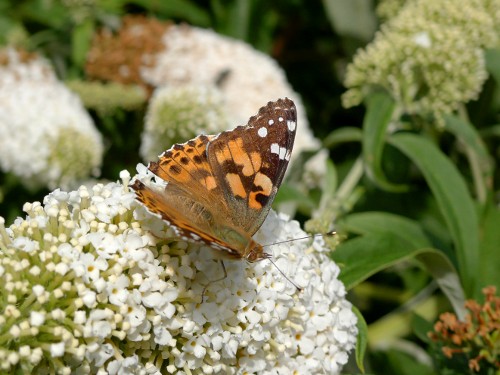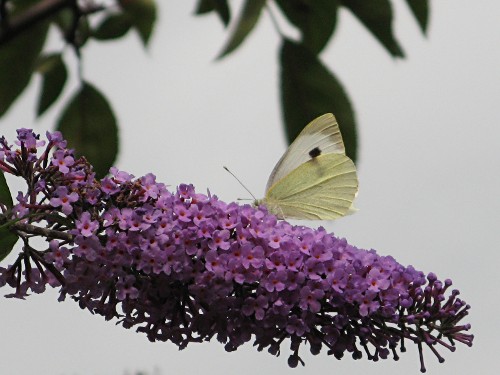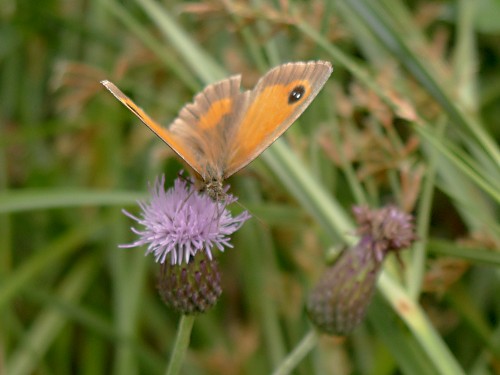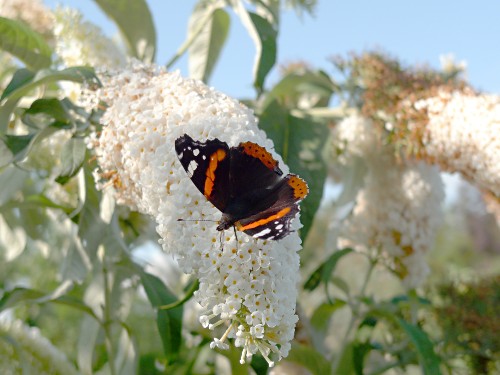It started with mild curiosity and a couple of pretty snapshots. How nice. Maybe I’ll post them on my new practically-empty webpage. But I kept finding out things I didn’t know and so this trivial little post has expanded. So that I can move on, here is the result of my noticing butterflies this year.
One morning, not long ago, I stepped out the door into an unexpected curtain of warm humid air. It was reminiscent of summer at home.
In the garden we have three buddleia: two purple and one white. They bloomed fantastically this year and attracted lots of insects. That sounds less pleasant than it was. The garden was aflutter with butterflies.
What made me start looking was that in July we were overrun by aliens!

There were so many and they looked so funky I thought for sure they were an invading species, pushing out the natives. Eventually I got it together and looked to see what they are.
This was one of those times where you do a search for something that it’s never crossed your mind to look for and there’s a whole website full of the answers to more questions than you even knew had been asked. In this case, the site’s called UK Butterflies (www.ukbutterflies.co.uk), and it’s beautifully, visually organized and easy to navigate.
There, I discovered we didn’t have aliens. They’re not even rare. They’re called Peacocks, for an obvious reason.  Or Inachis io. To me, they still look a bit too cool to hang out in the Northern Hemisphere.
This looks more normal to me.

It’s a Painted Lady. We have these in North America too, according to this page from the Canadian Biodiversity Information Facility, which seems to be an online version of The Butterflies of Canada by Ross A. Layberry, Peter W. Hall, and J. Donald Lafontaine. There were probably lots of these all along but I was distracted by the aliens.
One of each!

Who else was there? Apparently this is a female “Small White.” The male has only one black spot (The Butterflies of Canada again).

Really getting going at this point, I was starting to feel compelled to run for my camera whenever something I didn’t have in my collection flitted by.
Here we appear to have an example of the Large White, which if I’d cropped the shot differently would actually appear larger than the Small White…for me the giveaway is that the sooty colour at the tips of the forewings goes around the corner on the Large White. Both of these guys like cabbage and so they’re also called “cabbage whites.”

I also saw, but couldn’t capture, a brighter yellow one that wouldn’t stand still, which by the colour I’d guess was a Brimstone.
The next time I was at work I discovered one of these meandering around the edge of the pond. This, I see, is called a Gatekeeper.

Back at home, a Red Admiral.

It took me a while to get a shot of one of these. They didn’t seem to sit still for long.

(Slurrrp…) It’s a Comma. There’s a mark on the underside that somebody/somebodies decided looked like a comma. (Good picture at www.butterfly-conservation.org.) I never spotted that but I was struck by the scalloped trailing edges of the wings.
Whew. So there they are! I can move on now. But after all that reading about butterflies, I will never be able to forget that “nectar†is a verb.
